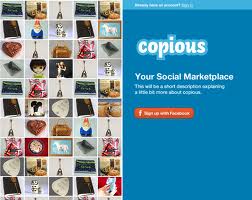2011 was a big year for a new wave of sexy ecommerce business models. Consumers have shown an interest in (and been throwing disposable income at) new online buying experiences that offer more than just large catalog of products. Here’s a quick summary of some new spins on the online shopping business model:
Specialized portals
Etsy specializes in hand-made goods by enabling very-very small businesses to sell their goods online. Etsy “brings heart” to ecommerce and has created a strong community around hand crafted goods and sustainable manufacturing. Some juicy Etsy stats:
- For 2011, sales increased over 80% from 2010 (compared to a 10-30% industry average)
- Etsy had more than 15 million visits Etsy between Black Friday and Cyber Monday
- Etsy’s mobile traffic grew 350% from 2010 to 2011.
Why has Etsy seen such success? Instead of a we-sell-anything approach, Etsy focuses on the collectibles community. Many sellers have grown tired of eBay’s old school interface and lack of focus on sellers. Additionally, Etsy has created a sense of product quality and prioritizes technical innovation and the user experience.
Design it yourself
In 2011, more newcomers popped up in the design-it-yourself (ie mass customization) space. These sites enable the quasi-designer or fashion blogosphere to control product design. Happy Toy Machine, Define my Style, Ocozy, and Style Rocks all launched in 2011, just to name a few. Design-it-yourself is a great fit for product categories that include both functional and style variability. Popular categories include fashion, jewelry, food, toys, and furniture.
What is the size of the design-it-yourself market? Many indicators show growth trends, including a recent Forrester report that finds that “interest in customizable products is mounting. More than 35% of U.S. online consumers are already interested in customizing product features or in purchasing build-to-order products that use their specifications.”
2011 was the year that social commerce went mainstream, mostly as a result of online retailers integrating Facebook share and like functionality into their pages.
Copious, a new San Francisco based start-up, focuses on solving an age-old problem in ecommerce: trust. Shoppers want to feel confident that they are getting what they expect, and from reputable (or known) sellers. Copious taps into your Facebook network to make you feel more at ease by showing your “six degrees of separation” from the buyer.
Curated designs / fashion
Fab.com takes the daily deal concept to the next level by focusing not just on great deals, but on great design. Fab’s recent business model pivot and growth success can be attributed to the need to focus on a well-defined, but broad shopping category; great design. Indeed, curation of content is a refreshing approach to many customers that are fatigued from the noise of product search and daily deal emails.
Another ecommerce model that leverages the power of curation is subscription commerce. Subscription commerce provides a shopping solution for customers that don’t want to go to the mall (ie suffer from mall fatigue). Examples include Trunk Club and Manpacks.
What do all these new ecommerce models have in common? Focus on people. These companies are not technology companies or supply chain companies; they are service companies. They are servicing a market that large shopping marketplaces have neglected.
- Focus on community: Specialized shopping portals like Etsy focus on cultivating the needs of a specific customer segment
- Encourage creativity: Design-it-yourself sites focus on inviting the customer to participate as a designer
- Build trust: Social commerce sites like Copious focus on raising consumer confidence by validating the trustworthiness of sellers
- Editorialize content: Curated daily deal sites focus on providing style advice along with great deals.
What’s are some next generation trends in ecommerce? Aspirational shopping for one. Pinterest has created a rapidly growing community focused on the cross-section of self-expression and online shopping.
Filed under: Market Trends | Tagged: ecommerce business, etsy, fashion jewelry, forrester report, hand crafted goods, mass customization |






Great article! Also thanks for linking to our site…
[…] Ecommerce innovation focuses on people […]
Good article. With the advent of StyleRocks, you need to update this article on Mashable:
http://mashable.com/2011/02/21/design-jewelry-online/